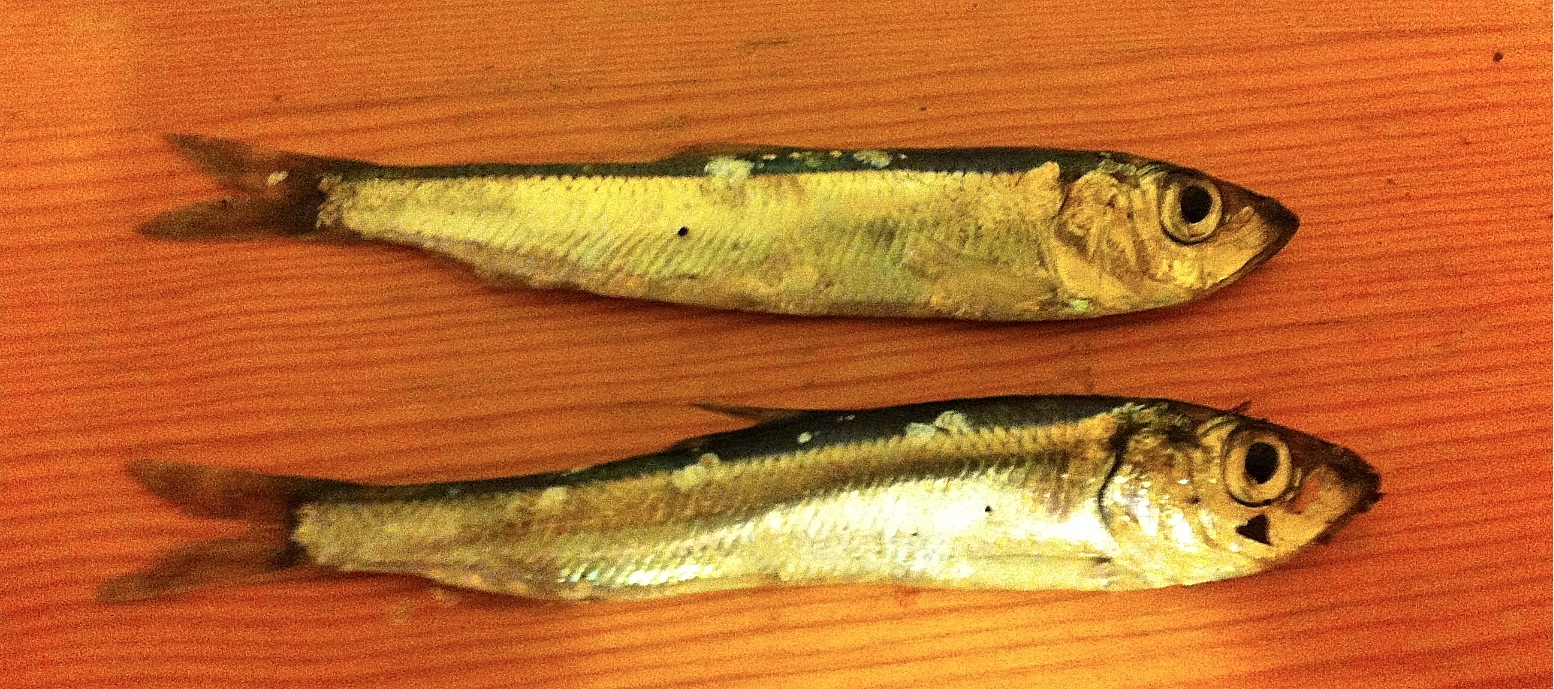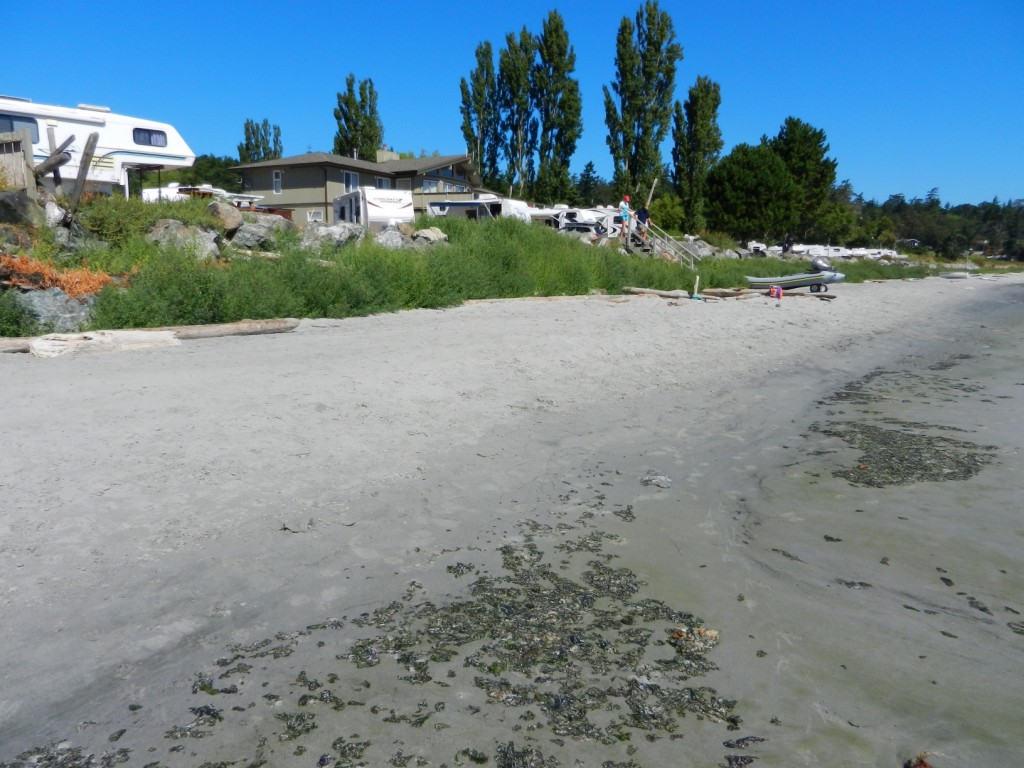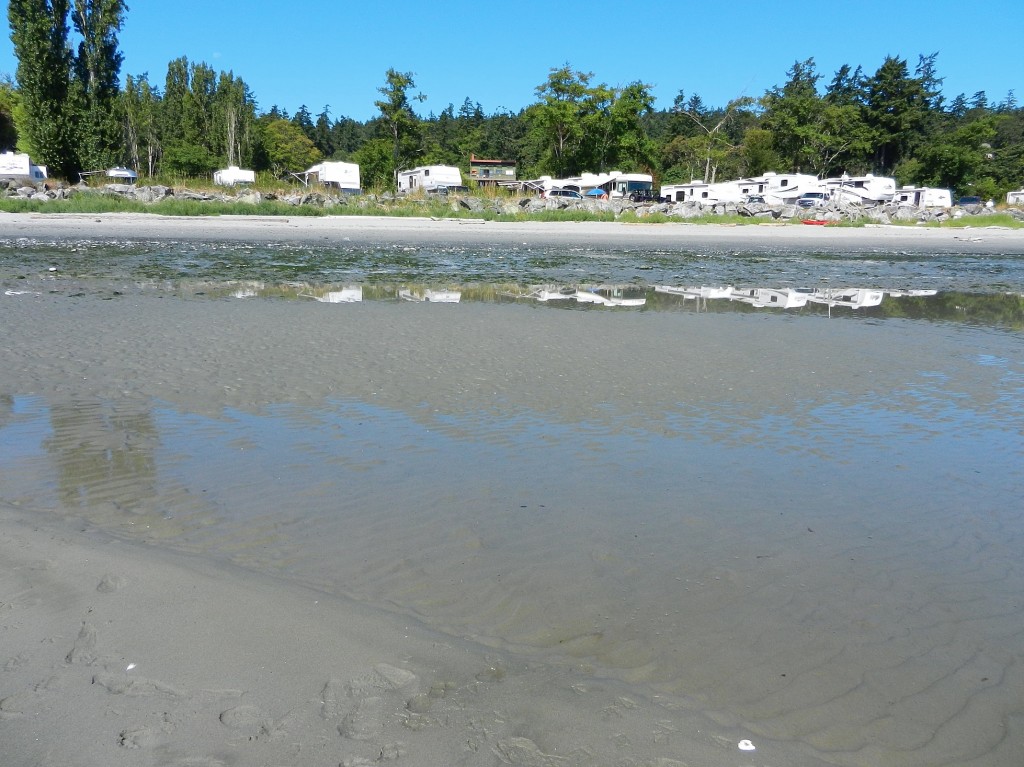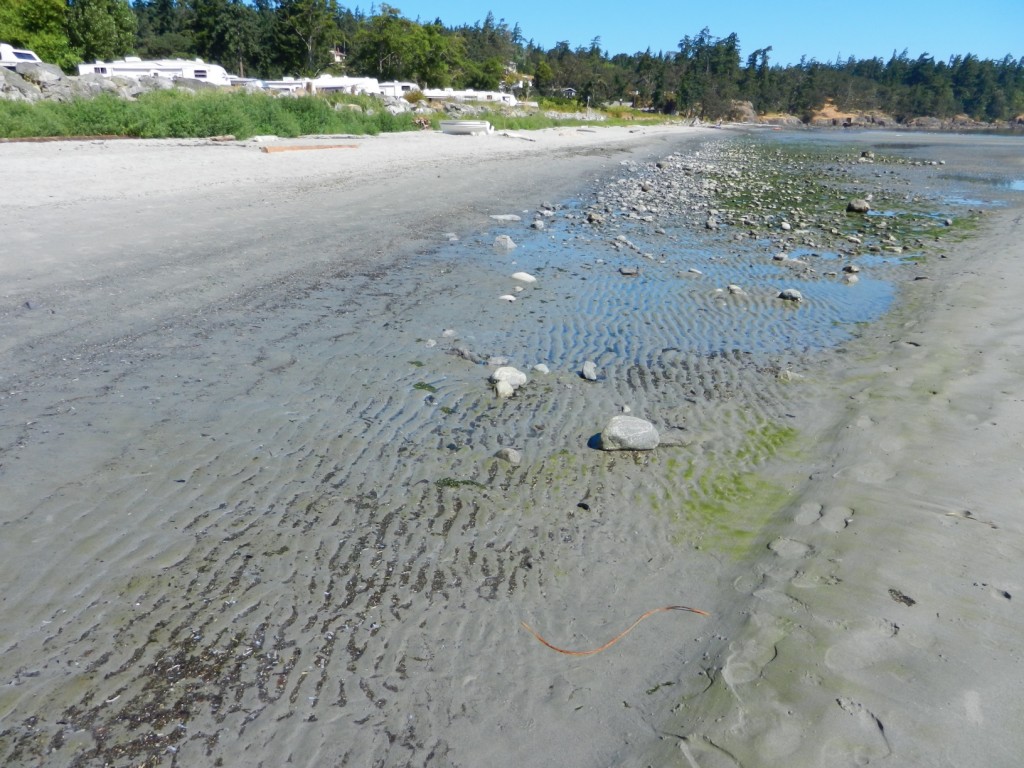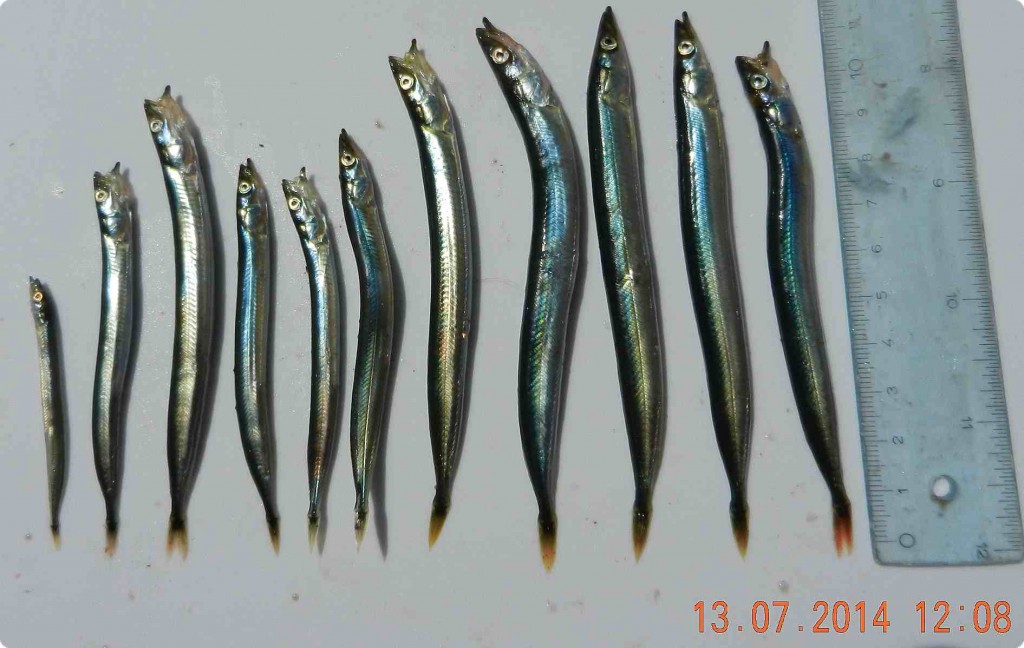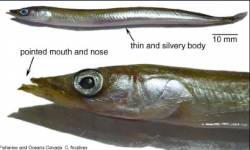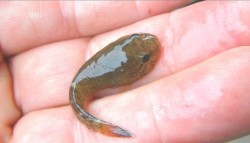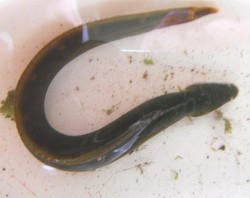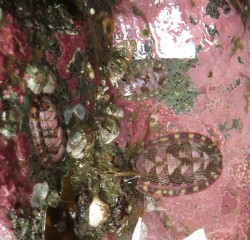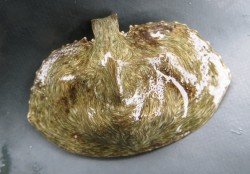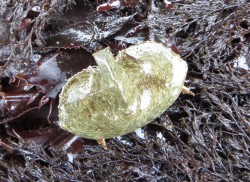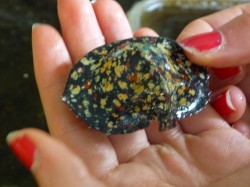Over the summer of 2013, a new seawalll was built at the south end of Weir’s beach. The purpose of the wall is not obvious, other than to create a walkway to the ocean for the residence above.
The �provincial� government owns the ocean floor and the foreshore (the area between the low water level and the natural boundary) along Metchosin’s Coastline. This structure sits within this foreshore area, as there is sand at it’s base, so it is questionable how this shoreline modification was permitted.
UPDATE:
- Under the General Marine Shoreline policies desired works require application to the appropriate Provincial/and or Federal agencies responsible. This particular property located at 5289 William Head Road was able to proceed under the following conditions:
- 1. Requirements of the Department of Fisheries & Oceans must be fulfilled.
- 2. Any work below the high water mark must have the approval of the Ministry Forests, Lands & Natural Resource Operations
- 3. Work was conducted in April according to the measures outlined in the Ryzuk Geotechnical Report dated March 7, 2013 and the report by Lehna Malmkvist, Swell Environmental Consulting Ltd., March 8, 2013
———————————————————————————————————–
Readers are recommended to read all parts of the publication below before attempting any alterations on shorefront property:
Another reference on hardening the shorelines states the problem rather plainly: “Hard structures, especially vertical walls, often create conditions that lead to failure of the structure. In time, the substrate of the beach coarsens and scours down to bedrock or a hard clay. The footings of bulkheads are exposed, leading to undermining and failure. … Failed bulkheads and walls adversely impact beach aesthetics, may be a safety or navigational hazard, and may adversely impact shoreline ecological functions.”
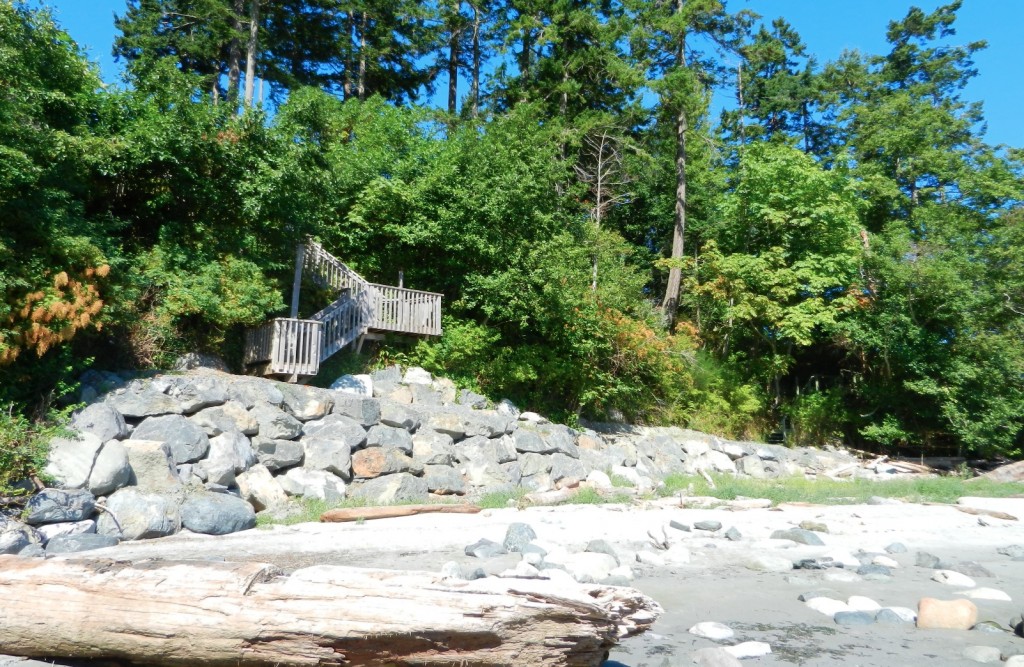
View of the seawall from the south.
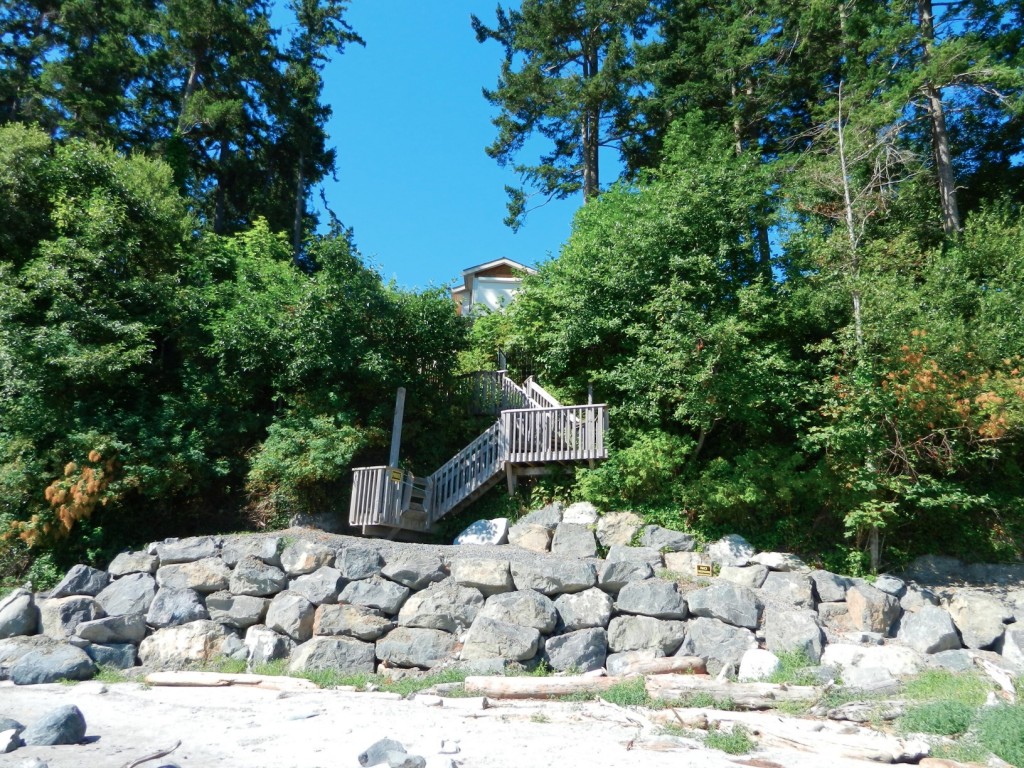
View of the seawall from the beach directly in front.
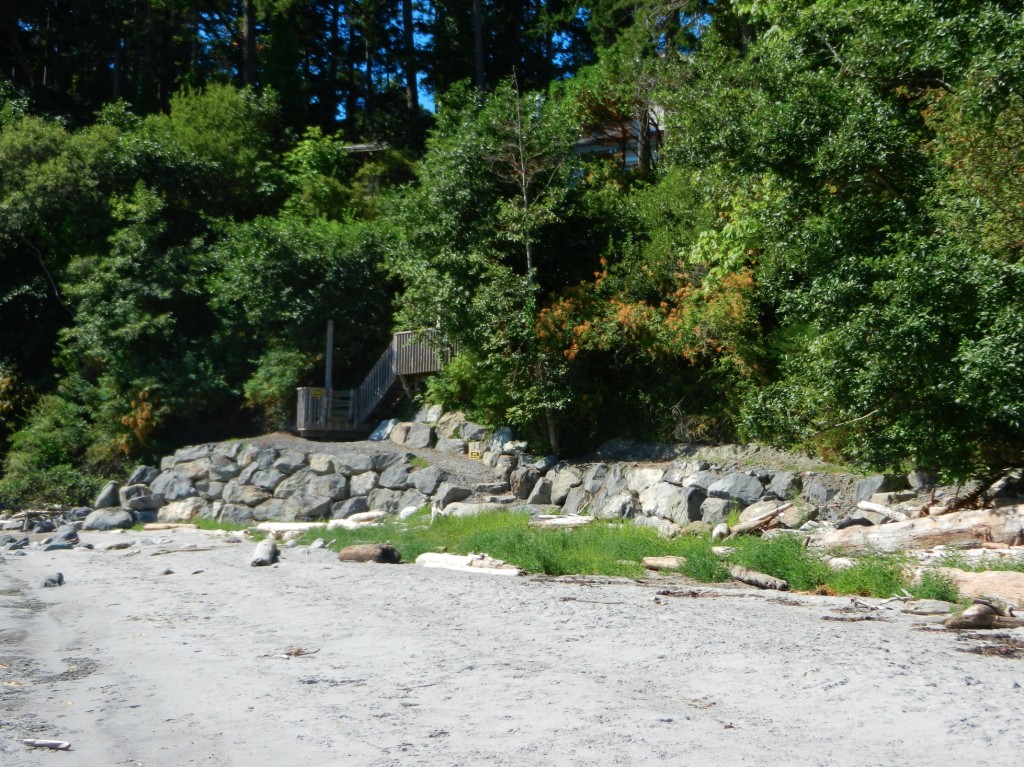
View of sea wall from the north.

